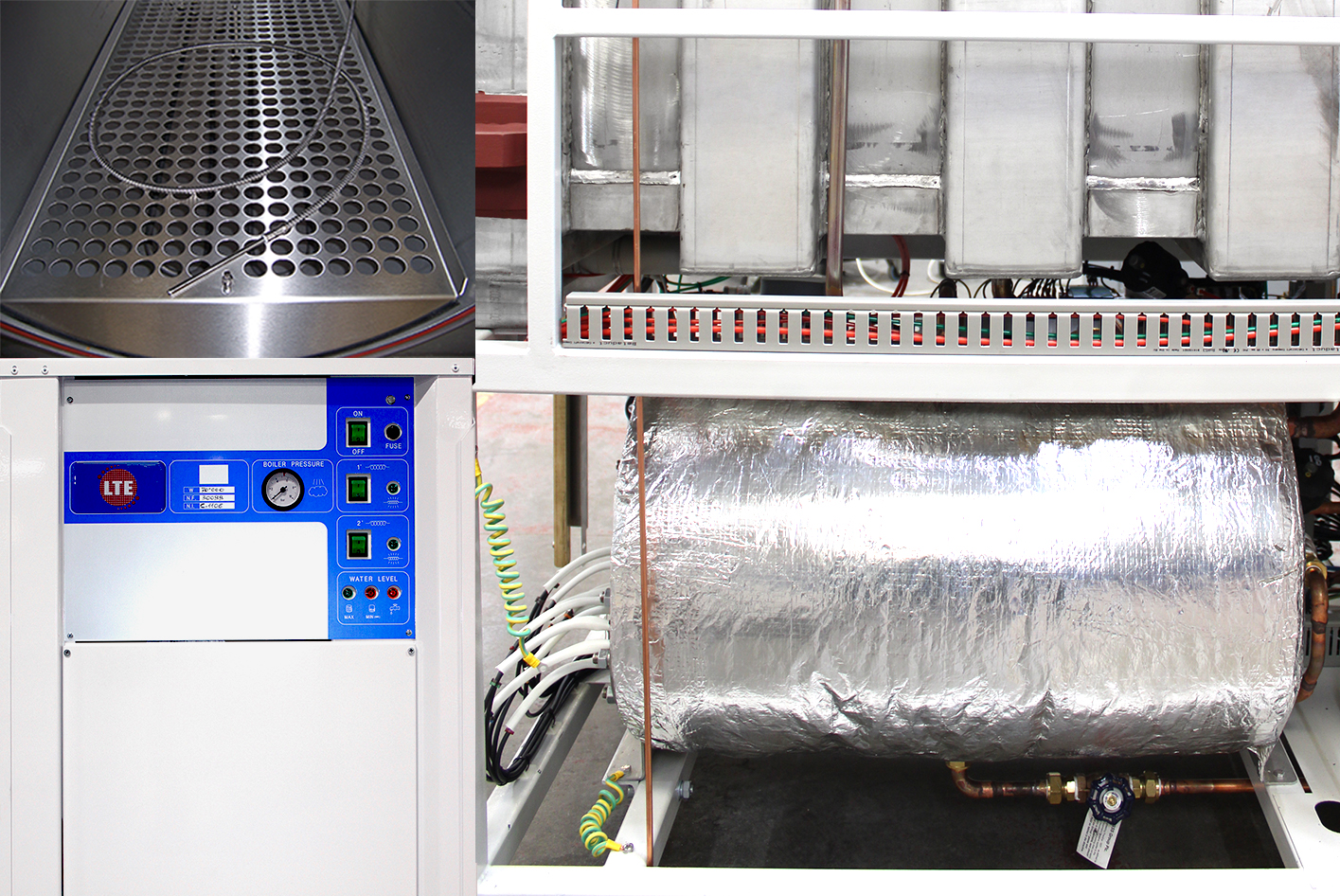Now that you have read our Autoclaves 101 – Load Types guide, you should hopefully know what you are planning to sterilize and have an idea of the features required for your load. So, the next step is deciding which autoclave is best suited for your load type.
“But there are so many different types of autoclaves” you say? Well worry not, we will be breaking this down further to make your decision easier. Starting with an area of potential confusion to anyone unfamiliar with autoclaves, the many methods of steam generation.
There are currently three main methods of generating steam.
The first method of steam generation – in-chamber heating, is perhaps the simplest and most cost effective, this method uses heating elements fitted inside the autoclave chamber. Water is manually poured (or automatically fed) into a reservoir inside of the chamber where it is heated by the heating elements to generate steam.
Its simplicity makes it a very easy machine to install, but there are some potential drawbacks you need to consider. For example, this form of steam generation would be unsuitable for loads requiring a completely dry finish. Loads will always be wet at the end of the cycle, even where the auto-drain option is fitted. Also, in the event of spillage/breakages these need to be swiftly, manually cleaned, which is both messy and time-consuming, as if the reservoir is left uncleaned you could be left with a rather unpleasant smelling autoclave. This could be alleviated by fitting the auto-drain and auto-fill feature.
Our Touchclave-R range offers a straightforward autoclave with its in chamber cylindrical chamber and is available with both vertical and horizontal loading.
The second method of generating steam is via an independent generator. Many Lab autoclaves including our Touchclave-K range utilize this method. Generally, the steam generator is fitted within the frame of the autoclave, usually below the chamber. The drawback of this type of generator is that you do need a water connection to feed the generator. In addition, you also need a drain point for effluent to flow out.
There are many benefits to having an autoclave with an independent generator. Starting with a cleaner, unencumbered chamber, free of heating elements providing a greater capacity for sterilization. Loads tend to come our much drier from this type of autoclave, although if a completely dry load is required, the fitting of vacuum and steam jacket is essential. Vacuum and other options can be fitted to help speed up cycle times considerably.
There are of course larger independent steam generators available for larger sterilizers requiring a high volume of steam output, such as our Touchclave Systems Autoclaves. We have a range of LTE vertical steam generators available, these floor standing units come with a small footprint and the capability to double stack to further save on space. They can also be connected for large scale projects with multiple machines so you could even have a spare generator connected to provide redundancy cover in case of failure or maintenance.
The final method is by far the most cost effective as we can make our machines without any form of steam generator then connect them to a direct steam supply. This both saves on cost and delivers the fastest cycle times because of the instant availability of the steam. Again, other options can be fitted to further enhance cycle performance.
The above are all proven methods of steam generation giving good results, which you choose largely depends on the load being sterilized and of course budget.
The final point to take into consideration with steam generation is whether you need regular (sometimes known as plant) steam or clean steam for your sterilization process.
Where clean steam is required you would not be able to use the in-chamber heating method. This is due to the nature of clean steam and its levels of purity which could eventually cause corrosion to the elements. Where using clean steam our machines need to be fed with RO (reverse osmosis) water and fitted with grade 316L stainless steel piping, both for longevity of the components and to preserve the quality of steam.








